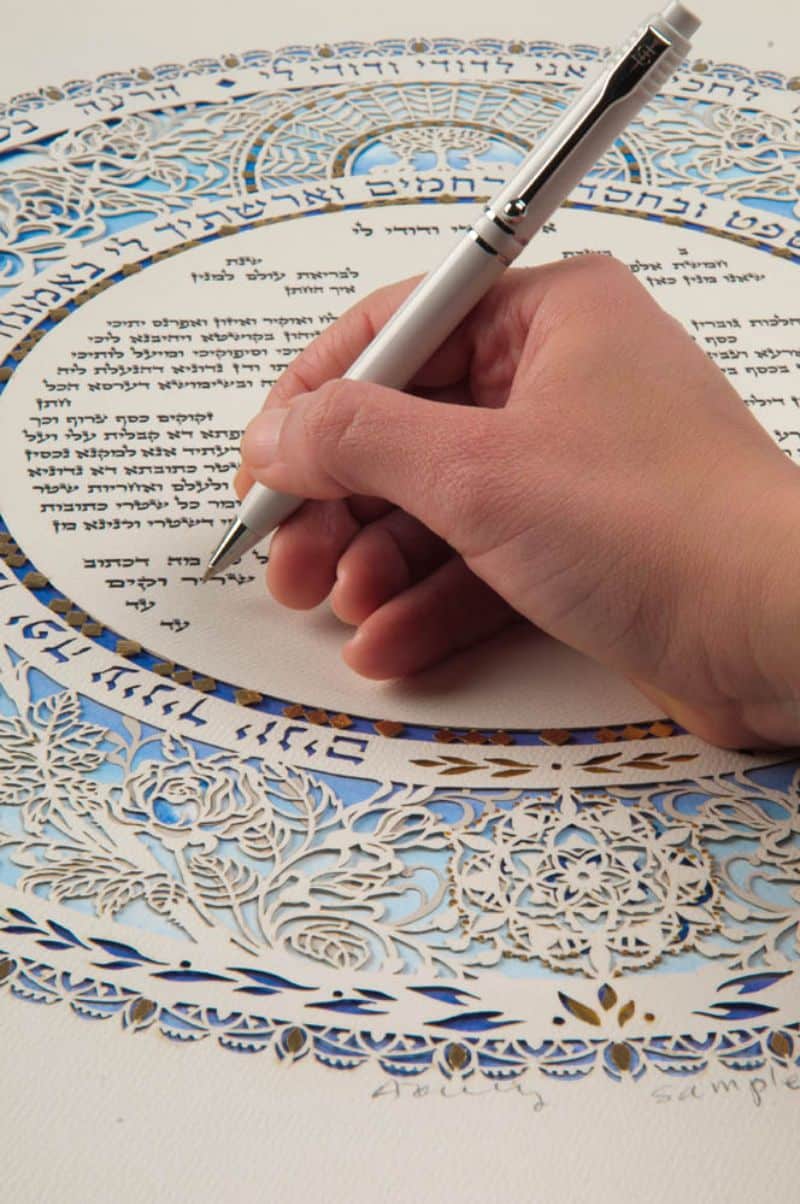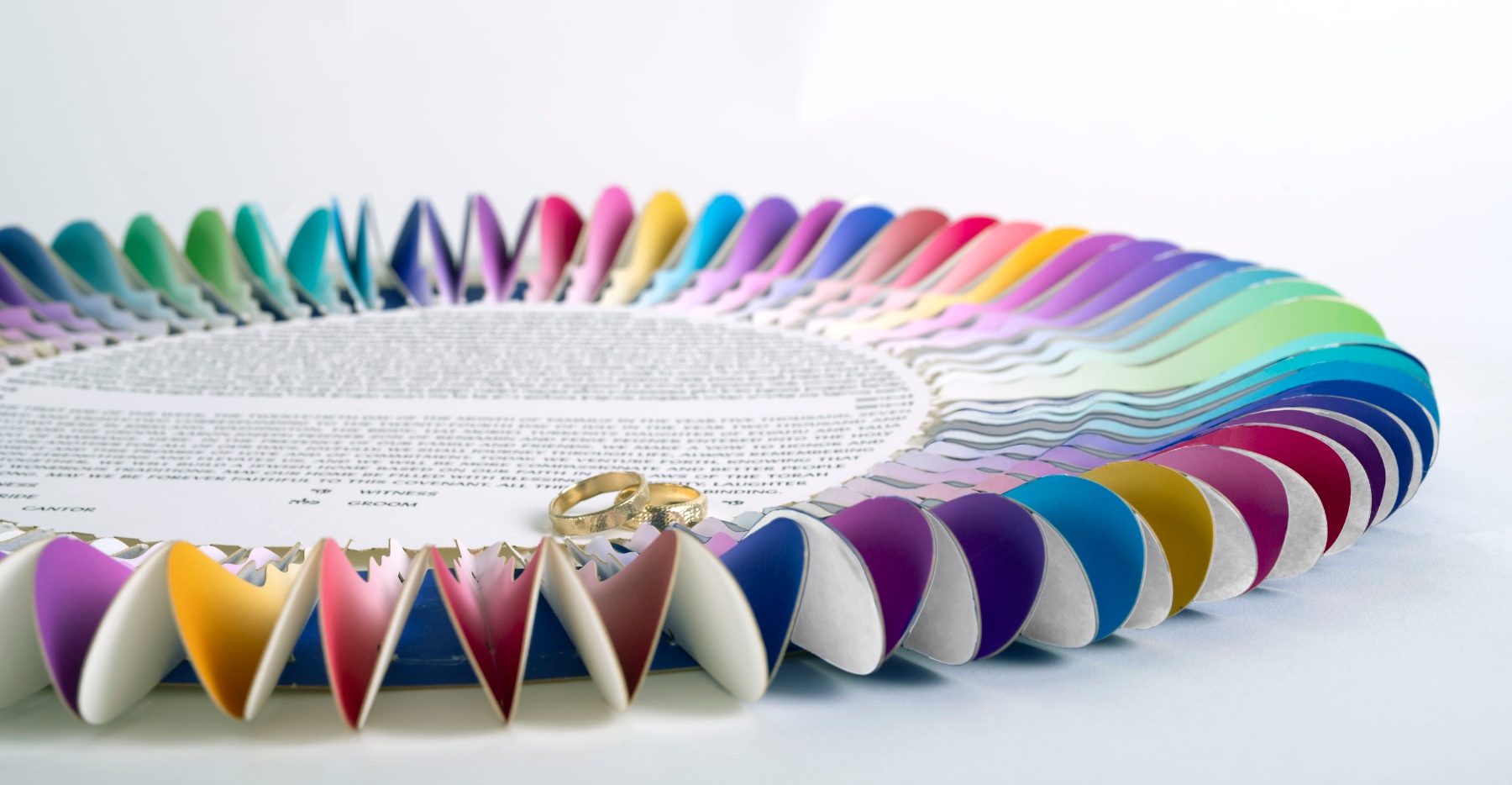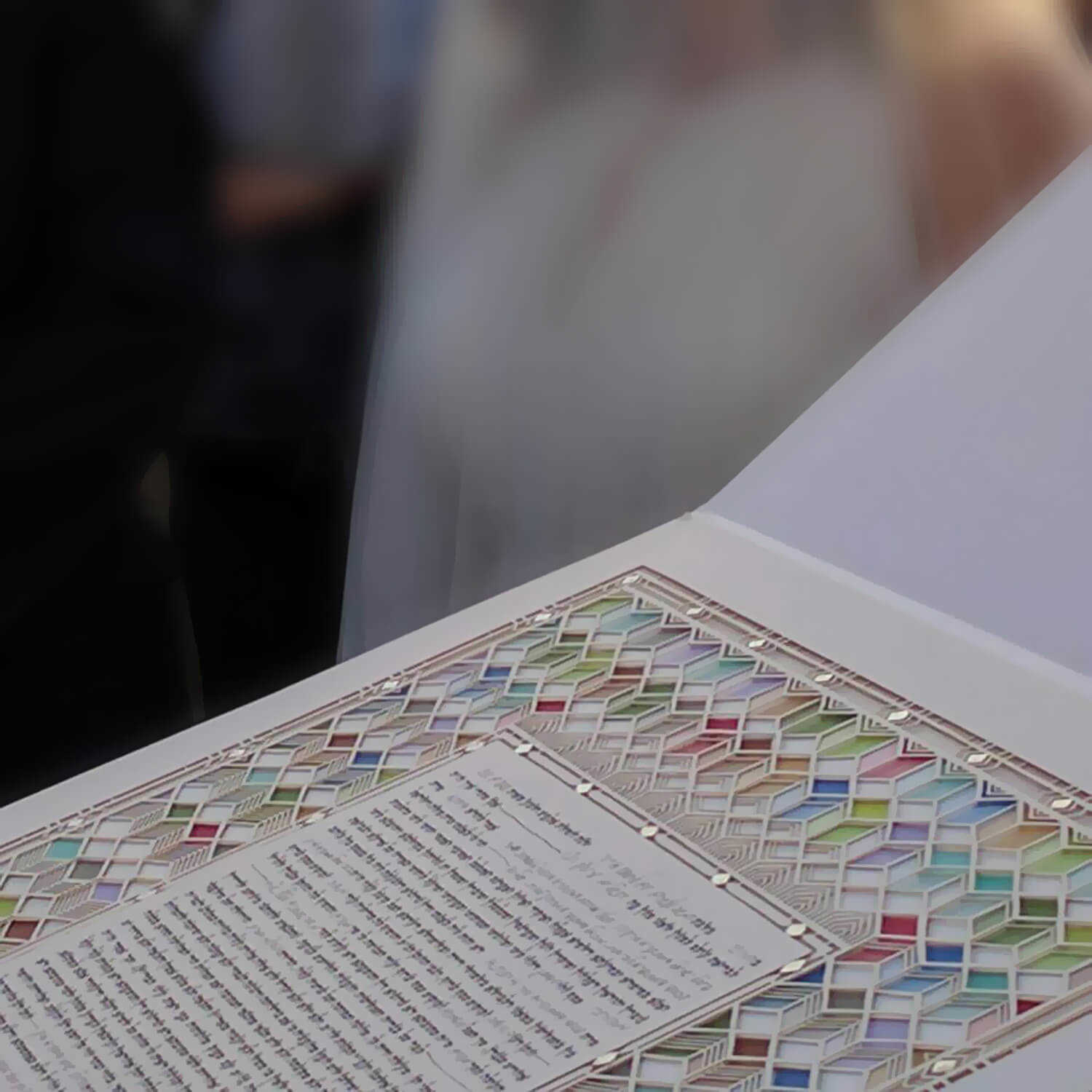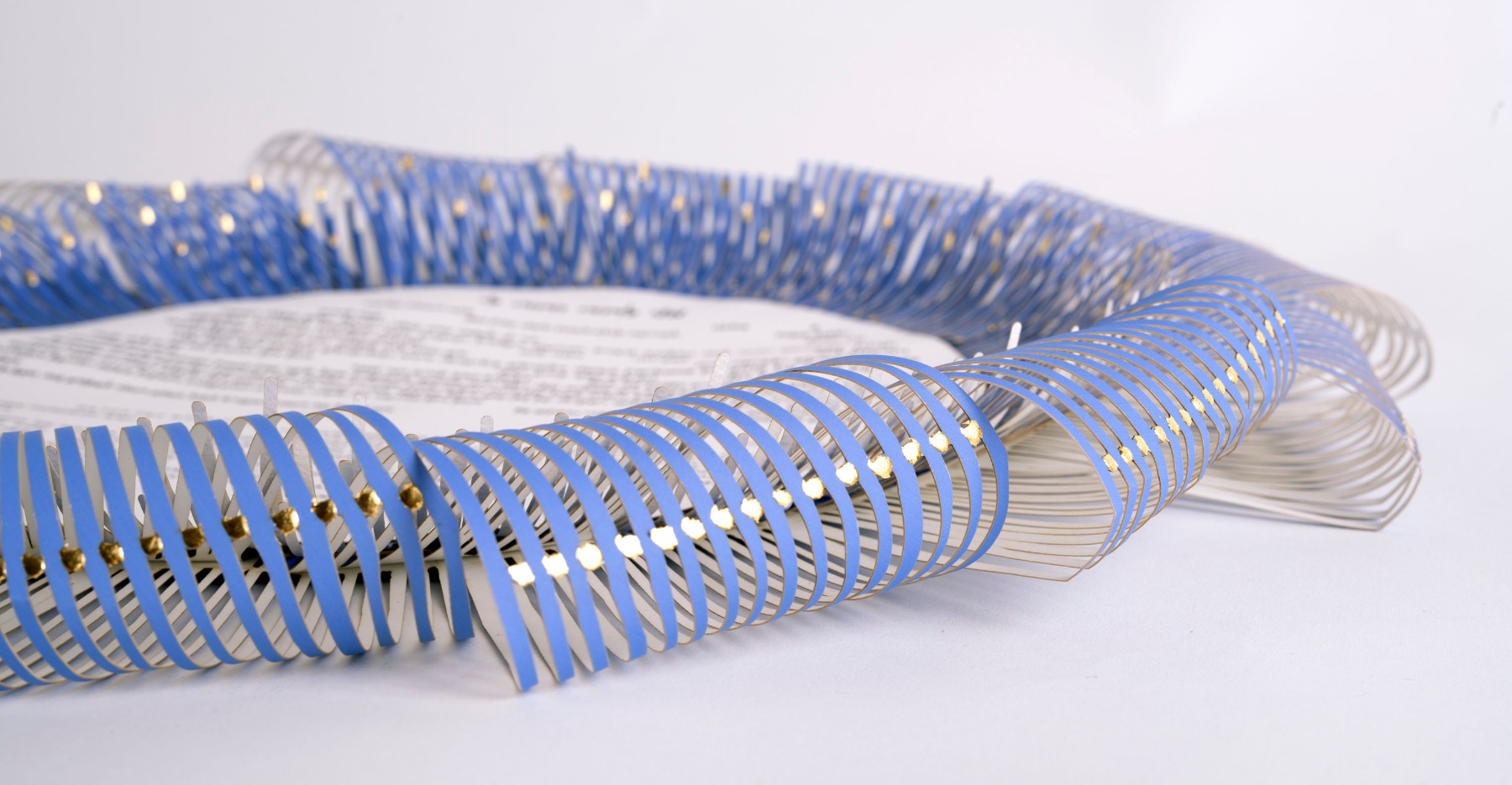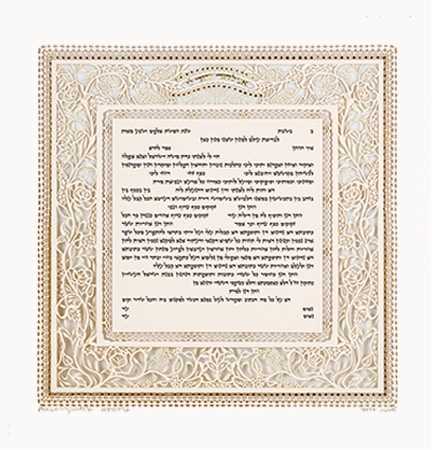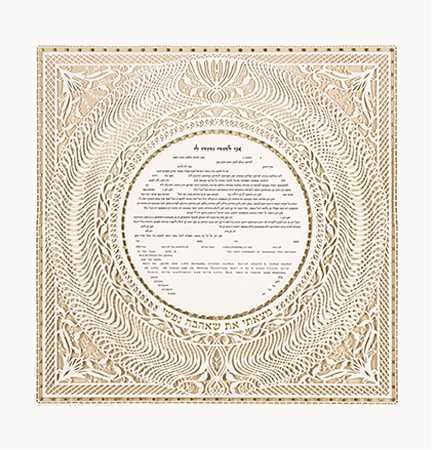Jewish wedding symbols

Talking about Jewish wedding symbols and the symbolism associated with Jewish wedding day traditions is basically talking about the entirety of the Jewish marriage ceremony. Everything is a nod to, or a reference to, or is symbolic of… The traditional marriage rites are layered, iced and trimmed with symbolism.
A Jewish wedding ceremony–regardless of whether the couple is religious or not—is brimming with Jewish legalism, traditions, philosophy, superstitions and history from start to finish. From the signing of the ketubah to the recital of the seven blessings, a Jewish wedding is stacked with meaning. And, even then—at the very least– several interpretations of that meaning. The Jewish wedding symbols are the wrapping paper for all these wonderful and sundry rituals with all the disparate explanations of their rhyme and reason. The illustrious weight of Jewish law, spirituality, heritage and values have been sustained from one generation to the next by way of ritual and symbolism. And, that is the beauty and the poetry (in a nutshell) of the Jewish wedding ceremony.
The Ketubah Signing

The Ketubah Signing
The ketubah, the Jewish marriage contract is a legal document that records the names, time and place of the wedding: delineates the obligations and commitments of the couple: and is signed by two witnesses. There are many variations of texts, languages and the number of witnesses, as well as who is eligible to sign the ketubah.
The ketubah is the wedding contract, but because marriage has a very special significance in Judaism as the very most important life cycle event, people began to beautify the document—a symbol, in itself, that this was not just some ordinary legal paper. The ketubah’s ornamentation were/are representative of Jewish values and themes—the building of a Jewish home (architectural motifs), Jerusalem, natural motifs (life cycle symbolism) menorahs (the light of the Torah) —just to list a few, are very popular motifs. Even today, chances are a totally abstract ketubah art style replete of traditional elements, represents a deeper and personal meaning for the couple rather than only an aesthetic preference.

The Chuppah
One of the most iconic Jewish wedding symbols is a chuppah or huppah. The chuppah is simply four poles with a cloth attached to the tops of each pole, stretching out to create a canopy for the bride and groom to stand beneath. The chuppah symbolizes the home that the couple will create together. Because the chuppah is open on all four sides, it also refers to the concept of unconditional hospitality—alluding to Abraham and Sarah who’s tent was open on all sides in order to welcome people into their home.
According to Talmudic tradition, upon the birth of a daughter a cypress would be planted; and on the birth of a son a cedar would be planted. The cedar and cypress branches were to be harvested in order to furnish the poles of the child’s chuppah when the time would come. This is, once again, another reference to life cycle events and the deep reverence that Judaism places on them.
Decorating the chuppah is also a way to include symbols such as in the use of flowers, specifically roses (romantic love) or of myrtle leaves (symbol for fertility and life). Often, a tallit that is part of the family’s heirlooms is used at the ceremony: representing the continuity of the Jewish people. The making of a couple’s chuppah from squares of fabric sewn together is becoming a popular tradition symbolizing something completely new and unique just like the unique people who are being joined together in matrimony.
The Rings

The Rings
Though not necessarily a forerunner in terms of classic Jewish wedding traditions, the wedding ring is, nonetheless, definitely part of the ceremony. According to Jewish law, the marriage is not official until the groom gives the bride an item (it need not be a valuable item). Traditionally, this would be a Jewish wedding rings. The ring must be a plain band: simple and seamless: without any holes, scratches or engravings and bought and paid for by the groom, himself. This Jewish wedding symbol represents that of hope for an everlasting marriage. Once again, the circular band evokes the notion of the cycle of life. In modern times, in a more egalitarian light, both brides and grooms exchange rings.
The Wine

The Wine
As is true in many Jewish ceremonies, wine plays an important role in the ceremony. Wine in Judaism welcomes the spirit of sanctity. Wine is a symbol of joy, making the heart happy. In order to make this happy-heart-making drink, a grape must be squeezed and crushed and fermented. Wine is not unlike marriage – persevering through all the crushing moments, an ever-developing process that takes the young grapes to a richer, more complex level. All this perfectly measures up to a metaphor for marriage. The simplicity and innocence of young love that through the years transforms to a deeper love just as the wine becomes richer with age.
During the wedding service under the chuppah, two cups of wine are blessed. The couple share a sip of wine in the Nissuim ceremony and a little later on in the Kiddushim ceremony. They drink from the same cup, symbolizing their union while their union is being sealed and blessed by the wine they sip.
The Number Seven
The number seven is pervasive in the Bible, the Talmud, Kabbalah and in ancient tradition. In the wedding ceremony, the Seven blessings are recited (usually by different honored wedding guests) right before the breaking of the glass. In Ashkenazi weddings, the tradition was/is for the bride to circle the groom seven times. There are several explanations for this, but prominent amongst these interpretations is that seven symbolizes completeness and fullness. Seven is a mystical thread that makes the connection between God’s creation and our human world. The seven blessings are complete in their scope and circling the groom seven times completes the building of the foundation of the home that the bride and groom will reside in.
The Broken Glass
Breaking the glass at a Jewish wedding ceremony is the iconic Jewish wedding symbolic act. Following the couple’s declaration of being spiritually one, a cup is wrapped in a cloth and set under the groom’s foot (or the bride’s). With the smashing of the glass, we are reminding those present of the sorrow of the destruction of the Temple – even in times of great joy, we shall remember the Jerusalem. Another interpretation (there are many) is that even as there is great joy, there is terrible sorrow. Marriage shall enhance the former, just as it shall strengthen the married couple to deal with the latter.

